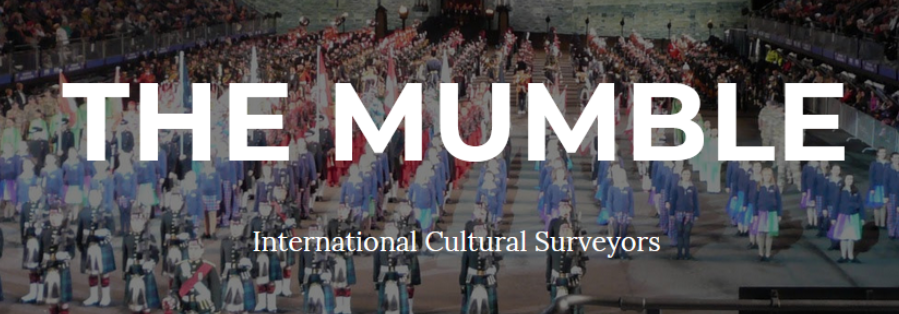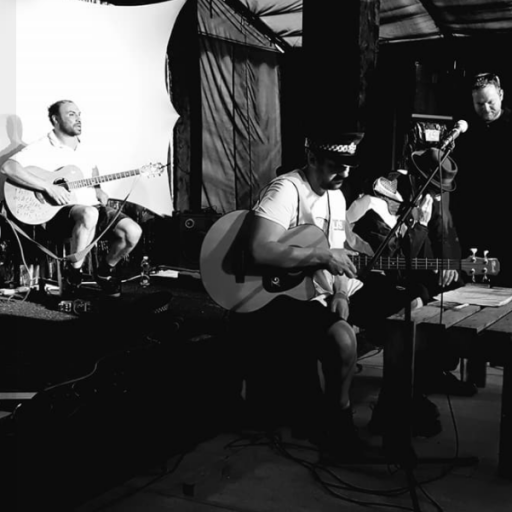Night of the Living Dead Remix

Leeds, Playhouse
Until the 15th February, 2020
Script: ![]() Stagecraft:
Stagecraft: ![]()
Performance: ![]() S.O.D:
S.O.D: ![]()
Night of the Living Dead Remix is imitating the dog’s take on George A. Romero’s 1968 horror classic, a film that used the horror format to examine race politics and to document an America tearing itself apart. With an interest in marrying narrative with technology, imitating the dog have set themselves the mind boggling task of creating the original film shot by shot onstage as the original version plays alongside their own version that is projected on a second screen. The company refers to this production as a task that they sometimes complete successfully and occasionally fail with unintentional, yet thoroughly welcome results.
So how does this remix work? It’s somewhat of a challenge in itself to put this into words, however at its most basic, Night of the Living Dead Remix comprises of three separate performances running concurrently – the original film, the results of their recreation and the actual act of recreating the film that takes place on the stage below the two screens. I couldn’t help but be reminded of a YouTube video by Red Letter Media in which a group of film critics watch three of Michael Bay’s Transformers films at the same time. Ostensibly, this is a satirical video that seeks to prove the point that these three films are exactly the same, with identical plot points, camera shots, character stereotypes etc. However, part of the appeal of this video is derived from watching a group of men suffering from a barrage of noise and information overload. For the duration of this production I felt as though I was partaking in a similar exercise, as my attention was drawn from screen, to screen, to stage, to watch with great interest as each individual shot is (amusingly and imaginatively) created. In the digital age, we are increasingly familiar with this barrage of information, as mobile devices sit alongside TVs in our front rooms, as any film, television show, video game and/or song sits at our fingertips. This visual onslaught seems to both fit the modern mindset and comment upon it at the same time. Are we information driven zombies? Is this remix a slap in the audience’s face, a reminder to wake up and slow down?
More importantly, is this “task” successful? Sometimes yes, sometimes no. Regardless, this is a thoroughly enjoyable production. It’s just that the enjoyment is occasionally too much, and perhaps it should also take the time to slow down. Breaking down the three separate performances even further, there are many individual elements at play: the stage is awash with projections – elements of the film, hand painted backdrops, news footage, slogans; there are wonderful sections featuring miniature sets and characters that play out like a recreation with children’s toys; the onstage action is endlessly fascinating, surreal and hilarious as the cast members play the same characters in different parts of the set to different cameras; there are additional (remixed) scenes that address the historical context of the film – the assassinations of Martin Luther King Jr. And Robert F Kennedy; the music and lighting assault the senses as scenes build into chaos. Each element is superb taken in isolation. It just continuously poses the question: is this too much?

The standout performance here is from Morgan Bailey as Ben, on whose shoulders rest the main action of the story, without any support from any on stage doubles (more on that later). In this remixed version of the film, Ben’s character builds up to a fantastic pay off that allows Bailey’s performance chops to shine. The other performances remain fairly basic, but this appears to be the intention as the production openly acknowledges the stilted, campy and frankly outdated nature of the film’s dialogue to excellent comic effect. Matt Prendergast, in particular, relishes the opportunity to ham up his performance as antagonist Harry Cooper. The seven strong cast are given the difficult (dare I say even unenviable?) task of portraying several characters throughout the duration of the production, rapidly switching between them from one shot recreation to the next, from one piece of precise blocking to another, portraying the same characters from different camera angles. As all this is taking place, they also need to sync their actions and dialogue the onscreen counterparts in the film that plays above the stage. Not to mention taking over camera duties and continuously reshuffling the scenery – including a flight of stairs – to suit one shot after another. It’s a logistical nightmare that they handle with great aplomb under the keen eyes of co directors Quick and Brooks. It just rarely results in performances that have any emotional resonance.
However, the real stars of the show are: Simon Wainwright, whose projections wash over the backdrop, switching from black and white recreations of the film’s sets to colourful bursts of news footage and graphics. At times the backdrop is unobtrusively abstract – enough to conjure up a graveyard or a cellar – and at others, it lights up with colours, marching soldiers and text that underlines the wider themes of race and civil unrest addressed within the story. James Hamilton, whose electronic bursts of noise provide thrilling counterpoint to moments of more traditional orchestral soundtrack. As a graduate of Leeds College of Music, his jazz background is evident in the questing and chaotic noise that fills the auditorium during key set pieces. Matthew Tully, whose crowd pleasing models deliver many of the production’s delightfully comedic high points, as miniature cars drive along roads and toy zombies (or ghouls as they are referred to in the film) dance around fiery sets.

I thoroughly enjoyed Night of the Living Dead Remix, I’m just left simultaneously wanting less and yearning for more. Perhaps there’s too much Living Dead and just not enough Remix here. It’s telling that when the individual elements diverge away from one another – stage, film and live projection – the production manages to coalesce into a much more compelling and coherent whole. We’re treated to the original film on one screen as news broadcasts on the other provide flavour, context and emotional sparks. The audience’s attention is no longer divided, but fully focused and engaged. At these moments, the projections switch from minimal monochrome sketches, to splashes of vital colour and the soundtrack switches from a conventional orchestral score to exciting electronic noise. Perhaps the novelty of these sections is exactly what gives them their power, however there’s the nagging feeling that the entire production would have massively benefited from this more layered approach – rather than three slightly different versions of the same story competing for our attention and ultimately detracting from the overall narrative. In these superlative moments, the separate elements complement and deepen the impact of the story and its social commentary.
Steve Bromley

Posted on January 29, 2020, in England. Bookmark the permalink. Leave a comment.


Leave a comment
Comments 0